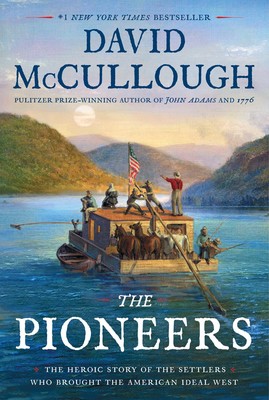The given name
Brice is distinctive in my husband's family tree, appearing only five times in the 265 years his family has been in America.
At left, a search I conducted on my Ancestry tree to identify the five men named Brice.
Adding them to my online trees and posting more detailed bios on Family Search, Find a Grave, and other websites keeps their memories alive.
This is all part of my plan to disseminate family history now, before I join my ancestors and my research and artifacts are bequeathed to the next generation.
Brice Smith - Brice #1 in America
Brice #1 is shown at bottom of the search results. That's Brice Smith (1756-1828), my husband's 4th great-grandfather.
This first Brice in America was born in Cumberland County, PA, a son of Irish immigrants. As an adult, Brice caught "Ohio Fever" and moved west to Fairfield County, Ohio with his wife, Eleanor Kenny (1762-1841). Their daughter Rachel Smith (1799-1838) grew up and married John Larimer (1794-1843) - and this couple named their oldest son Brice S. Larimer, in memory of the first Brice.
Brice S. Larimer (1819-1906) - Railroad Agent
Born in Rush Creek, Fairfield County, OH, Brice was brought to Elkhart County, Indiana in 1835 by his pioneering parents. There, he met and married New York-born Lucy E. Bentley (1826-1900). Brice and Lucy raised a family of four children while Brice was first a farmer, then a postmaster. Later, he served as the area's first railroad agent during the heyday of rail travel through Elkhart. This Brice was a grandson of Brice #1.
Margaret Jane Larimer (1859-1913) was the youngest daughter of Brice and Lucy. At the age of 17, with her parents' consent, she married William Madison McClure (1849-1887) who--like his father--worked for the railway in Indiana.
Their oldest son was Brice Larimer McClure. Months before his birth, however, another Brice was born into the family. Brice #3 and Brice #4 were both great-great-grandsons of the original Brice in America, both grandsons of the second Brice in America.
Milton Brice Larimer (1878-1968) - Electrical Entrepreneur
Milton Brice Larimer's parents were William Tyler Bentley Larimer (1850-1921, a son of Brice S. Larimer) and Elizabeth Stauffer (1852-1936). Born in Elkhart County, Indiana, on January 16, 1878, Milton Brice was the third Brice in the family.
He began his career as an electrician. At the age of 27, he married Elizabeth Luzetta Wright (1877-1968) in 1905. Within a few years, they moved to Fort Wayne, Indiana, where Milton Brice was president of Protective Electrical Supply. They had no children and died within months of each other in 1968, both aged 90.
Brice Larimer McClure (1878-1970) - Master Machinist
The fourth Brice was born on December 29, 1878 in Little Traverse, Michigan, during the very brief period when his parents--William Madison McClure and Margaret Jane Larimer McClure--lived there, close to other McClure relatives. The Michigan foray lasted only a couple of years, until the family returned to Elkhart, Indiana, where Margaret had been born. Brice's father worked for the railroad, but died of typhoid fever when Brice was just 9 years old.
Following in his father's footsteps, Brice became a machinist for the railroad. In his 20s, he was already a master machinist, working for the "Big Four" railroads. Brice met Floyda Steiner (1878-1948) and they married in 1903 at the home of one of her sisters in Upper Sandusky, Ohio.
They immediately settled in Cleveland, close to Brice's work in the railyards. Their beloved only child, Marian Jane McClure (1909-1983), grew up in Cleveland and remained there most of her life. Brice continued working as a machinist, foreman, and supervisor until the end of World War II. He died in 1970, two weeks before his 92d birthday.
Brice in Current Generation
While Marian Jane McClure was working at an insurance firm in Cleveland, she met and married Edgar James Wood (1903-1986). They gave their younger son the middle name of Brice in honor of his grandfather, the master machinist. This youngest Brice is a 4th great-grandson of the original Brice in the family, the first in America.
Currently, there are only five men named Brice in the family. But perhaps that will change with future generations, and now they will know the story of their namesake.
--
Namesake is the #52Ancestors challenge for this week.













